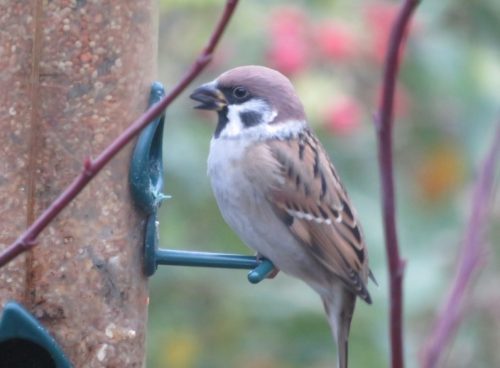This attractive sparrow has a chestnut brown cap and white cheeks with black spot, which are the main physical features separating it from the similar house sparrow. It is a shy bird, and is difficult to observe in the summer when it starts breeding. The UK population has declined significantly since the 1970s so if you have a tree sparrow colony you are lucky!
Confirm presence
To monitor tree sparrows, you first need to confirm presence. Putting up large hanging seed feeders will attract tree sparrows, so the chances are if you put a couple up round the farm, they will use them! The best time to see them is winter, as they become less obvious in summer.
Winter feeder counts
When you have confirmed presence, a simple way to monitor numbers is to visit the feeders for two or more timed, evenly-spaced counts each winter (November to February). Keep a record of how many you see each time. Repeat the same number, duration and location of counts each year to keep it comparable.
Breeding success
Monitoring breeding activity is harder, but important if you want to measure fledgling success. You may have heard of tree sparrow ‘villages’ – because they are keen users of nest boxes. You could put up a group of boxes for them, and watch to see how many are used, but monitoring occupancy is not indicative of breeding abundance, because a pair may use several nest boxes during the breeding season, leading to miscounts. Therefore, a more accurate method is to approach a local nest recorder or ringer with in-depth knowledge of nesting behaviour. Start with contacting the British Trust for Ornithology, who may be able to put you in touch with someone who could determine the number of active nests for you.
Tree sparrow on feeder © Carter Dorscht

